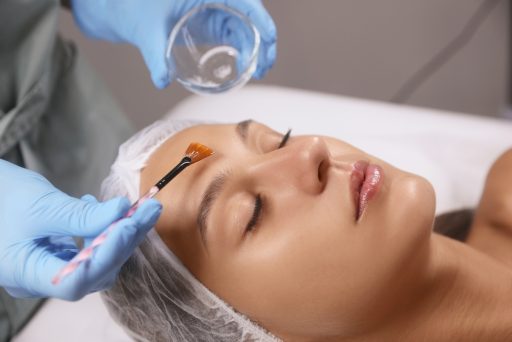
Does uneven skin pigmentation, wrinkles, acne or acne scars affect your confidence? With so many types of skin resurfacing and injectable treatments available to help resolve these signs of ageing and reduce acne scars, it can be overwhelming to know where to start.
Although these aesthetic treatments may help, it’s important to understand their differences. Our guide will simplify choosing the best facial treatment to give you optimal results for your unique and desired skin issues.
Microneedling uses a dermal roller that has fine needles on the surface. When the device is rolled across your skin, it causes minute punctures. This skin trauma triggers the natural healing process and the production of elastin and collagen, resulting in plump, smooth, healthier skin.
Suitable candidates for microneedling are people seeking to diminish dark spots and fine lines and wrinkles and improve the tone and texture of their skin.
Unsuitable candidates are people with inflammatory skin conditions, such as active acne, eczema and psoriasis. This is because when the punctures are created, it can be easier for bacteria to enter the skin, which could lead to an infection.
Pros: Microneedling treatments have minimal downtime and generally, any redness, swelling or itchiness will dissipate within two to three days. With a faster recovery time, microneedling can be done closer to an important event.
Cons: Microneedling requires multiple treatments to show visible results. Typically you will need four to five sessions, which means it could take three to four months to notice any significant improvements.
Chemical peels are a skin resurfacing procedure in three strengths that treat various skin issues and concerns.
The three types of chemical peels are:
Suitable candidates for a chemical peel would be people with active acne or deep pitted acne scars and fine lines and wrinkles.
Not suitable candidates for a chemical peel are people:
If you are unsure of the medication you have taken before having a chemical peel, we advise you to consult with your GP.
Pros: Just one treatment with a moderate chemical peel can produce noticeable improvements in uneven pigmentation, acne and acne scarring.
Cons: Skin requires longer to recover following a medium or deep chemical peel. Medium chemical peels require roughly ten days, and deep peels may require up to four weeks of downtime. However, due to the deeper level of trauma to the skin, chemical peels result in far more significant results than just one microneedling treatment can achieve.
Although this post is about microneedling vs chemical peel treatments, let’s quickly review injectable treatments that help reduce lines and wrinkles. The two key injectable treatments are dermal fillers and Botox. Dermal fillers are used to enhance features and diminish tear troughs and deep lines.
On the other hand, Botox is a neurotoxin used to relax muscles and effectively reduces fine and moderate wrinkles and prevents deep lines from forming on the face and neck. Many people choose to combine Botox with fillers to address different issues concurrently.
Regardless of your desired outcome, the outer surface of your skin can benefit from resurfacing treatments, which consist of microneedling, chemical peels and laser treatments, in combination with injectables. These skin rejuvenation treatments are suitable to reduce fine lines and wrinkles, dark spots and acne scarring and to improve skin tone and texture. Your doctor or dermatologist will create a treatment plan tailored to your unique skin and desired results.
You should wait seven to fourteen days after a microneedling treatment before having a light to medium chemical peel. Your doctor will advise on the best treatment plan using multiple aesthetic procedures.When can I have microneedling treatment after a chemical peel?
You can have microneedling treatment for four to six weeks following a chemical peel.
Chemical peels clear dead skin cells and surplus oil on the surface of your skin. This helps reduce blocked pores, decreasing the potential of recurring acne outbreaks following treatment.
Numerous studies have found chemical peels more beneficial than microneedling treatments in reducing the overall appearance of deep, pitted acne scars.
Generally, following a single treatment with a medium chemical peel, you will notice a significant difference once the skin has healed. Skin will look younger, plumper, brighter, smoother and fine to moderate lines and wrinkles will be less noticeable.
However, we usually advise a course of treatments for the best outcomes and even more effective results in reducing lines, wrinkles and deep, pitted acne scars.
Contact us for a free consultation at our Harley Street aesthetic clinic to determine the best course of action for your needs, and get more information about our aesthetic treatments in London.







